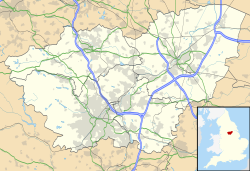| Kirk Bramwith | |
|---|---|
 Village street in Kirk Bramwith | |
Location within South Yorkshire | |
| Population | 320 (2011 Census) |
| Civil parish |
|
| Metropolitan borough | |
| Metropolitan county | |
| Region | |
| Country | England |
| Sovereign state | United Kingdom |
| Post town | DONCASTER |
| Postcode district | DN7 |
| Dialling code | 01302 |
| Police | South Yorkshire |
| Fire | South Yorkshire |
| Ambulance | Yorkshire |
Kirk Bramwith is a village and civil parish in the Metropolitan Borough of Doncaster in South Yorkshire, England. It had a population of 200 in 2001, [1] increasing to 320 at the 2011 Census. [2] The village centre is located on a narrow strip of land, sandwiched between the River Don Navigation to the south east and the New Junction Canal to the north west. It is low-lying, with most of it close to the 16-foot (5 m) contour, and is almost surrounded by drainage ditches. [3]
Contents
The name Bramwith derives from the Old English brōmwudu meaning 'broom wood'. Wudu was later replaced by the Old Norse vithr, with the spelling also influenced by the Old English wīc and the Old Norse þveit . 'Kirk' derives from the Old Norse kirkja meaning 'church'. [4]

